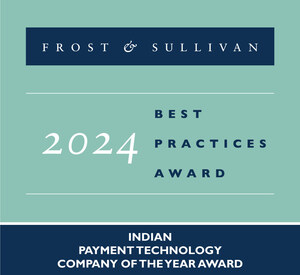Proliferation of Multiple Smart-phones and High-end Feature Phones Buoys Prospects for Mobile Device Management Technologies
MOUNTAIN VIEW, Calif., Feb. 22 /PRNewswire/ -- Mobile device management (MDM) technologies are poised for worldwide commercialization and adoption by 2011-2012. The launch of a host of smart phones such as the RIM Blackberry, Apple iphone, and the G2 from Google has clearly enlarged the subscriber base for mobile users. The upsurge in the mobile device market has further stimulated the growth of software-based applications for managing various aspects of mobile devices including configuration and security in addition to other business applications.
(Logo: http://www.newscom.com/cgi-bin/prnh/20081117/FSLOGO)
New analysis from Frost & Sullivan (http://www.technicalinsights.frost.com), Mobile Device Management -- A Strategic Outlook, finds that the firmware-over-the-air (FOTA) and software-components-over-the-air (SCOTA) paradigms, based on the OMA-DM specifications, are displacing proprietary protocols and driving the adoption of MDM solutions.
If you are interested in a virtual brochure for this study, please send an e-mail to Sarah Saatzer, Corporate Communications, at [email protected], with your full name, company name, title, telephone number, company e-mail address, company website, city, state and country.
"As conventional models of device management incur high costs in terms of customer support and maintenance operations, remote device management solutions that employ FOTA and SCOTA have been catapulted to the spotlight," note Technical Insights Research Analysts Archit Subramanian and Anirudh S. Srinivasan. "These techniques present both consumers and stakeholders with a quicker and more cost efficient model, utilizing over-the-air technologies for implementing software updates in wireless devices."
While the technology promises immense benefits from a cost standpoint, it is still insufficient and thus important for the stakeholders to evaluate a few other key factors to ensure its successful commercial rollout globally. Although developers have designed numerous mobile device-specific applications that afford multiple functionalities, users are concerned about the ease of installation and configuration of these applications on their mobile devices.
Heavy dependence on product support teams has made the user-friendliness of these solutions questionable. Over-the-air MDM offers a lot of promise in bridging this gap by delivering an intelligent platform for enabling remote configuration and management of mobile applications.
The internal memory of mobile devices is a key challenge impeding the functional viability of remote MDM. The upgrade packages are often large and compete for storage space within the memory of mobile devices. Developers in this space must offer packages to support in-place updating and execute firmware upgrades with minimal strain on the run time memory of the mobile device.
With FOTA aiming to enable remote upgrades in mobile applications, the vulnerability of mobile devices to malicious agents across wireless networks is bound to increase.
"The technology is implicitly expected to secure the entire update process in mobile devices; however, it will also be required to possess the competence of detecting and quarantining any undetected bugs already existing in the software," says Subramanian. "The need to embed such strong security measures comprising the resource requirements of mobile devices poses a major test for the developers in this domain."
A thorough and comprehensive process of validation, verification, and authentication is vital for ensuring remote device management.
The Open Mobile Alliance (OMA) and its Device Management (DM) working group is the major consortium acting as the single umbrella for all MDM standard development activities. Vendors must take appropriate steps to ensure that solutions developed comply with the latest specifications of the OMA-DM, as well as formulate new standards to reflect the development of new, emerging MDM capabilities.
"The US offers the most significant market opportunities at this point in time," observes Srinivasan. "In the next two years, service operators in countries such as India, Japan and South Korea are expected to adopt MDM in order to capitalize on their booming mobile subscriber-base."
Mobile Device Management -- A Strategic Outlook, a part of the Technical Insights subscription, provides an analysis of MDM and offers in-depth insights on the drivers and challenges influencing the over-the-air technologies market. Strategic recommendations for overcoming the impediments currently prevailing in this domain are also provided. Further, this research service includes detailed technology analysis and industry trends evaluated following extensive interviews with market participants.
Technical Insights is an international technology analysis business that produces a variety of technical news alerts, newsletters, and research services.
About Frost & Sullivan
Frost & Sullivan, the Growth Partnership Company, enables clients to accelerate growth and achieve best-in-class positions in growth, innovation and leadership. The company's Growth Partnership Service provides the CEO and the CEO's Growth Team with disciplined research and best-practice models to drive the generation, evaluation, and implementation of powerful growth strategies. Frost & Sullivan leverages over 45 years of experience in partnering with Global 1000 companies, emerging businesses and the investment community from 40 offices on six continents. To join our Growth Partnership, please visit http://www.frost.com.
Mobile Device Management -- A Strategic Outlook |
|
D1CA |
|
Contact: |
|
Sarah Saatzer |
|
Corporate Communications – North America |
|
P: 210.477.8427 |
|
SOURCE Frost & Sullivan
WANT YOUR COMPANY'S NEWS FEATURED ON PRNEWSWIRE.COM?
Newsrooms &
Influencers
Digital Media
Outlets
Journalists
Opted In





Share this article